Over the past weeks, I have received some photos of a moth through various social media. All with the same question: what moth species is this? All these showed a herald moth (Scoliopteryx libatrix) or simply herald in short. It is one of the few moth species that hibernates as an imago. They do this in sheds and cellars, but also, for example, in bunkers and winter roosts for bats. The latter is rather daring of these moths, since they are an important food source for bats. Four butterfly species also overwinter as imago, namely the peacock (Aglais io), the small tortoiseshell (Aglais urticae), the comma butterfly (Polygonia c-album) and the brimstone (Gonepteryx rhamni).
Winter moth
And what about the winter moth (Operophtera brumata) that I wrote a blog about before? After all, the name suggests that you can see these in the winter. That is partly true. As long as it is not too cold you can see the winter moth until the end of December and even sporadically in January during mild winters. Although its name suggests otherwise, these moths cannot withstand the cold very well. They don’t have the possibility to protect their haemolymph, that is to say their ‘blood’ (see also my blog about winter damselflies) against freezing. The aforementioned butterflies that do hibernate do have. And so also some moth species such as the herald, but also the buttoned snout (Hypena rostralis) is a winter-active species. Why these species overwinter as imago and not as eggs, caterpillars or pupa like most species is unknown to me.
Willow and poplar
The host plants of the herald are willow (Salix) and poplar (Populus), in particular the European aspen (Populus tremula). The female lays her eggs on these trees and in the period from May to September you can find the caterpillars on it. Before pupating, the caterpillars make a cocoon between some spun leaves, often at the end of a branch. After a few weeks, a new moth flies out. The herald has two generations per year and you can see the moth all year round, with peaks around February, April and July. It is a true nocturnal moth, but sometimes you will come across one during the day resting on a twig. The herald is attracted to both light and syrup, so there’s a good chance you can see it when out mothing.
Orange streak
The most characteristic feature of the herald is the orange streak on the forewings, with some yellow specks in it. And what is also striking are the light-coloured curved lines on the predominantly grey-brown wings. It is precisely this combination of colours and lines that makes the moth barely noticeable among the fallen leaves in autumn and winter. The moth has had its English name since 1782 and probably owes it to the fact that it is one of the first moths to fly around each year. Like a harbinger of spring. But it could also have to do with the colourful wings, which are reminiscent of a herald’s cape.
Curved wings
The genus name Scoliopteryx seems to be derived from the ancient Greek word skolios (σκολιός), meaning crooked or bent and pteron meaning wing. Which could therefore indicate the bends or serrations in the rear edge of the wings. The origin of the species name libratix is less clear. This refers to one who honours the gods. It is not known what Linnaeus was thinking when he came up with this. Perhaps the colour of the moth’s wings, combined with the jagged edges, reminded it him of the ceremonial robes of priests? Who’s to say?
Put out
When someone finds a butterfly or moth in winter, the question is usually what to do with it. If you leave the insect inside your warm house, it will remain active and consume far too much energy. And because there is no nectar to be found, the animal will not make it to the end of winter. The best thing to do is to gently catch it with a glass and a piece of cardboard underneath. And then release the animal in a (garden) shed or under a shelter. The animal then looks for a good place to hibernate again. To emerge as one of the first butterflies or moths when the first warm days and glimpses of the sun appear in spring.
Sources:



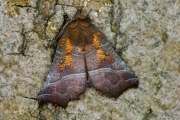
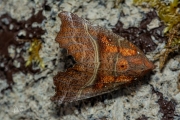
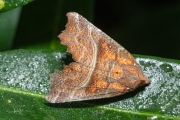
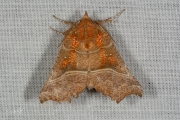
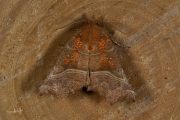
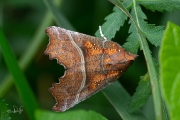
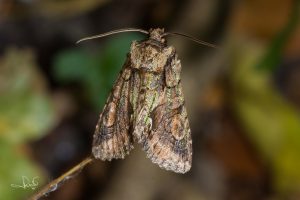
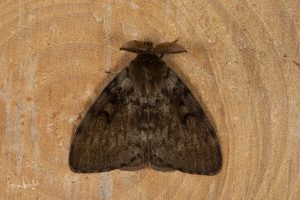
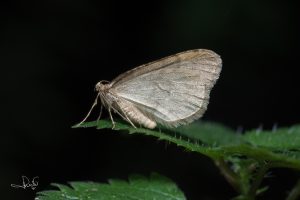
Hi there – re your comment about the libatrix epithet, given that a libatrix is one who offers a libation – a drink-offering – to the gods, then I like to think that Linnaeus may have been inspired by seeing hibernating Heralds carrying droplets of condensation, as they often do, as shown in these images https://www.flickr.com/photos/149980226@N06/51721374373/in/dateposted-public/ https://www.flickr.com/photos/149980226@N06/44737364885/in/album-72157680421712138/
Hi Clive, thank you for your addition. Indeed, it could very well be that Linnaeus found his inspiration for the species name there. Beautiful pictures by the way!